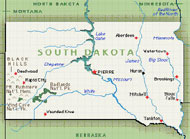| 1.0 | TRAVEL AND TRAFFIC MANAGEMENT |
| 1.5.2 | TSI shall include an Information Access function that allows travelers to access the available information. |
| 1.5.2.5 | Information Access shall provide the capability for travelers to access the TSI information via any of, but not limited to, the following methods: |
| 1.5.2.5(a) | Highway advisory radio. |
| 1.6 | TRAFFIC CONTROL |
| 1.6.0 | ITS shall include a Traffic Control (TC) function. Traffic Control provides the capability to efficiently manage the movement of traffic on streets and highways. Four functions are provided, which are, (1) Traffic Flow Optimization, (2) Traffic Surveillance, (3) Control, and (4) Provide Information. This will also include control of network signal systems with eventual integration of freeway control. |
| 1.6.1 | TC shall include a Traffic Flow Optimization function to provide the capability to optimize traffic flow. |
| 1.6.1.2.1 | Wide area optimization shall integrate the control of network signal systems with the control of freeways. |
| 1.6.1.4 | Traffic Flow Optimization shall include a Control function that is responsive to both the current demand as well as the expected demand. |
| 1.6.1.7 | Implementation of the Control function shall include strategies that account for at least the following: |
| 1.6.1.7(a) | Human factors. |
| 1.6.2 | TC shall include a Traffic Surveillance function. |
| 1.6.2.5 | The wide area surveillance shall acquire sufficient data to provide the system with the knowledge of the existing conditions. |
| 1.6.2.5.2 | The data process function shall process traffic data to generate near term predictions of traffic conditions. |
| 1.6.3 | TC shall include a Device Control function. |
| 1.6.3.3 | The Device Control function shall provide the capability to exercise control over those devices utilized for traffic control. |
| 1.6.3.3.1 | Device Control shall include the capability to control traffic signalization, including rapid modification of signalization parameters to respond to traffic requirements. |
| 1.6.3.3.2 | Device Control shall include the capability to dynamically control traffic signing. |
| 1.6.3.3.3 | Device Control shall include the capability to control freeway ramp metering. |
| 1.6.3.3.4 | Device Control shall include the capability to exercise dynamic control over the infrastructure (such as reversible-lanes, turning restrictions, etc.). |
| 1.6.3.4 | Device Control shall communicate control data to the following devices. |
| 1.6.3.4(a) | Traffic signals. |
| 1.6.3.4(e) | Human operator support. |
| 1.6.3.4.1 | Traffic Surveillance shall include a data process function to process the traffic data which are acquired. |
| 1.6.3.6 | Device Control shall provide the operator the capability to adaptively change system response in order to provide a response that is coordinated with other TMCs responding to incidents. |
| 1.6.4 | Device Control shall provide traffic control information to other elements of the ITS, including but not limited to the following: |
| 1.6.4(a) | In-vehicle navigation. |
| 1.10 | HIGHWAY RAIL INTERSECTION |
| 1.10.3 | At all HRIs with active railroad warning systems, HRI shall manage the traffic in the intersection. |
| 1.10.3.3 | HRI shall provide an Intelligent Intersection Controller (IIC) function to manage highway and rail traffic in the intersection. |
| 1.10.3.3.5 | IIC function shall report real-time HRI traffic status as advisories or alerts. |
| 1.10.5 | HRI shall provide a High Speed Rail (HSR) Subservice for HRIs on rail lines with operational speeds between 80 and 125 MPH. |
| 1.10.5.2 | HSR shall provide special safety features to enhance safety. |
| 1.10.5.2.6 | HSR shall provide HRI status to highway vehicles as either a "STOP FOR TRAIN" or a "PROCEED" indication. |
| 7.0 | INFORMATION MANAGEMENT |
| 7.1 | ARCHIVED DATA FUNCTION |
| 7.1.0 | ITS shall provide an Archived Data Function to control the archiving and distribution of ITS data. The Archived Data User Service provides the Historical Data Archive Repositories and controls the archiving functionality for all ITS data with five major functions: 1) the Operational Data Control function to manage operations data integrity; 2) the Data Import and Verification function to acquire historical data from the Operational Data Control function; 3) the Automatic Data Historical Archive function for permanently archiving the data; 4) the Data Warehouse Distribution function, which integrates the planning, safety, operations, and research communities into ITS and processes data products for these communities; and 5) the ITS Community Interface which provides the ITS common interface to all ITS users for data products specification and retrieval. ADUS helps achieve the ITS information goal of unambiguous interchange and reuse of data and information throughout all functional areas. |
| 7.1.3 | The Archived Data Function shall include a Data Import and Verification (DIV) function to acquire historical data from the Operational Data Control function. |
| 7.1.3.1 | DIV shall be capable of importing selected ITS Operational data from the ITS Operational Repositories. |
| 7.1.3.1.9 | DIV shall be capable of importing data on ITS Physical Characteristics of Transportation Infrastructure to include: |
| 7.1.3.1.9(d) | Transportation facilities. |
| | |












